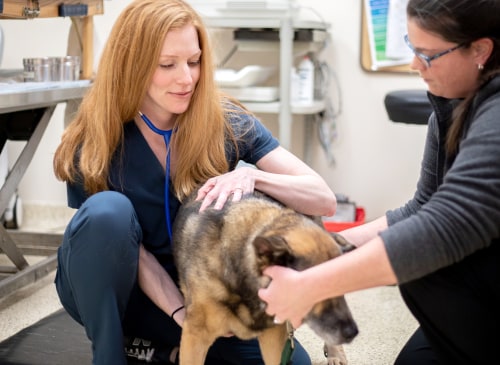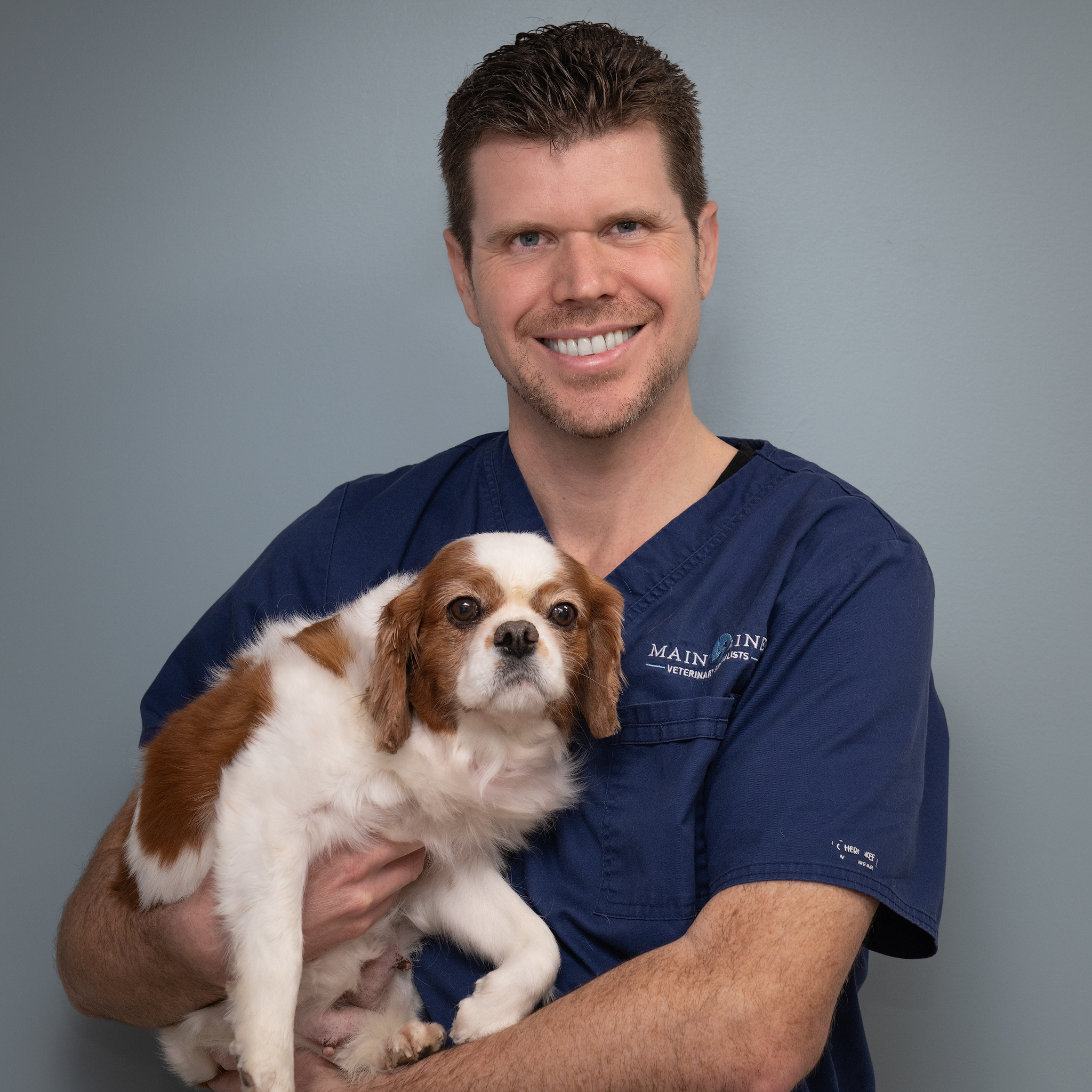The Function of Ultrasound and CT Scan in Modern Vet Practices: Insights From Experienced Professionals
In modern-day vet practices, ultrasound and CT scans considerably improve diagnostic capabilities. These imaging strategies supply essential understandings right into animal health and wellness, directing treatment choices. Experienced experts acknowledge the unique benefits of each method. Ultrasound uses real-time evaluations, while CT scans deliver intricate physiological information. Comprehending their applications and roles elevates essential concerns concerning their effect on client outcomes and the future of vet diagnostics. What insights can be obtained from their integrated usage?
Comprehending Ultrasound in Veterinary Medication
Ultrasound is an important diagnostic tool in veterinary medication, supplying a non-invasive approach to envision inner frameworks. This imaging technique employs high-frequency acoustic waves to create real-time photos of body organs and cells, permitting vets to analyze problems without surgical intervention. Usual applications consist of reviewing the heart, liver, kidneys, and reproductive body organs, in addition to keeping track of pregnancies.The procedure is reasonably fast and can be carried out in various settings, making it an available option for vets. Unlike radiography, ultrasound gives thorough details concerning soft tissues and blood flow, which is important for accurate diagnoses.Veterinary specialists rely upon ultrasound to discover irregularities such as lumps, cysts, and liquid build-up. Its ability to assist biopsies and various other treatments further boosts its utility in clinical technique. By supplying a risk-free and effective method to analyze internal makeup, ultrasound has become a keystone of modern-day veterinary diagnostics.
The Benefits of CT Checks for Pet Diagnostics
CT checks offer substantial advantages in vet diagnostics by providing improved accuracy in determining inner conditions (Ultrasound For Dogs). As a non-invasive imaging method, they guarantee the security and convenience of pets during exams. In addition, CT checks promote an extensive analysis of internal structures, enabling more efficient therapy preparation
Enhanced Diagnostic Accuracy
Innovations in imaging technology have considerably boosted diagnostic accuracy in veterinary medicine, specifically via making use of CT scans. These scans provide thorough cross-sectional images of an animal's internal structures, enabling vets to recognize problems with precision. The high resolution and three-dimensional capabilities of CT imaging help with the detection of conditions such as tumors, fractures, and internal bleeding that may be missed with traditional imaging methods. Additionally, CT scans can help in pre-surgical planning by providing an extensive sight of anatomical connections. This level of detail not just enhances the precision of medical diagnoses however likewise aids in tailoring effective therapy strategies. Subsequently, the assimilation of CT innovation into veterinary methods is changing the landscape of animal healthcare, enhancing end results for people.
Non-Invasive Imaging Strategy
The intro of non-invasive imaging methods has revolutionized pet diagnostics, with CT checks becoming a prominent device in veterinary techniques. These scans supply high-resolution, cross-sectional photos of a pet's interior structures, allowing vets to examine complex conditions without the demand for intrusive procedures. The benefits of CT scans include their capacity to identify growths, fractures, and interior bleeding with exceptional precision. In addition, they help with the evaluation of soft cells and organs, improving diagnostic abilities. The speed of CT scanning allows fast decision-making, which is vital in emergency situation circumstances. By minimizing stress and anxiety and discomfort for the pet, CT scans add to a more gentle approach to diagnostics, eventually boosting treatment results and progressing veterinary treatment.
Comprehensive Internal Assessment
A detailed internal evaluation is essential for precise diagnosis and reliable treatment in veterinary medicine. CT checks deal significant benefits in this respect, providing comprehensive cross-sectional photos of an animal's internal structures. This sophisticated imaging method enhances visualization of complex anatomical areas, making it possible for veterinarians to identify irregularities such as growths, cracks, and internal bleeding with greater precision. Additionally, CT checks facilitate the assessment of problems that might be testing to detect via typical methods. The speed and accuracy of CT imaging additionally contribute to timely treatments, improving person results. As vet techniques significantly incorporate CT innovation, the benefits of considerable inner evaluations come to be noticeable, reinforcing the relevance of this tool in modern-day veterinary diagnostics.
Contrasting Ultrasound and CT Imaging Techniques
While both ultrasound and CT imaging serve important roles in veterinary diagnostics, each method supplies distinct benefits and constraints that can affect clinical decision-making. Ultrasound is especially valued for its real-time imaging abilities, enabling vets to observe dynamic physical processes. This method is non-invasive, mobile, and does not involve ionizing radiation, making it a safer alternative for both clinicians and animals. Nonetheless, ultrasound might have restrictions in envisioning particular physiological structures or deep tissues.Conversely, CT imaging provides thorough cross-sectional views of the body, enabling specific localization of irregularities. It succeeds in assessing complex organs and frameworks, particularly in the thorax and abdominal area. Nonetheless, CT scans call for sedation or anesthesia in a lot of cases and involve direct exposure to ionizing radiation. Ultimately, the selection between ultrasound and CT relies on the specific scientific circumstance, the area of interest, and the seriousness of the analysis requirements.
Situation Researches: Successful Medical Diagnoses Via Imaging
Study illustrate the substantial enhancements in analysis precision achieved with innovative imaging technologies like ultrasound and CT scans in vet techniques. These improvements not only improve the discovery of various problems but additionally help with effective and timely therapy strategies. Evaluating specific situations can highlight the transformative effect of these imaging methods on veterinary medicine.
Diagnostic Precision Improvements

Imaging Innovation Advancements
As vet imaging innovation proceeds to progress, its influence on diagnostic abilities ends up being progressively obvious. Recent case studies highlight the successful application of advanced ultrasound and CT check strategies in recognizing complicated conditions. For instance, a veterinary facility made use of high-resolution CT scans to identify an unusual type of lung cancer in a dog, which conventional imaging had actually missed out on. Likewise, an ultrasound examination disclosed a stomach mass in a cat, motivating prompt surgical treatment and a positive outcome. These innovations not just improve diagnostic precision but additionally allow veterinarians to design targeted treatment strategies. By leveraging sophisticated imaging innovations, vet experts are considerably boosting individual treatment, resulting in more efficient management of different health problems in pets.
The Function of Imaging in Emergency Situation Veterinary Treatment
Imaging plays an important duty in emergency vet care, supplying veterinarians with vital info required to make rapid, educated choices. In urgent scenarios, methods like ultrasound and CT scans make it possible for specialists to quickly analyze an animal's interior structures, determining important conditions such as interior blood loss, fractures, or organ problems. These imaging modalities enable for real-time evaluations, assisting in timely interventions that can be life-saving. As an example, ultrasound is vital for examining soft tissue injuries and conditions like liquid build-up, while CT checks offer thorough pictures of intricate physiological structures, crucial for identifying injury instances. The rate and precision of these imaging strategies enhance the veterinarian's ability to develop reliable treatment plans, making certain the best possible results for their individuals. The integration of innovative imaging modern technologies right into emergency veterinary practices is not just valuable however progressively required, as it improves analysis capabilities and boosts total animal treatment throughout vital minutes.

Training and Expertise in Vet Imaging
Although advanced imaging methods such as ultrasound and CT scans are essential for efficient vet care, the effective implementation of these innovations greatly depends on the training and experience of veterinary experts. Skilled use imaging devices requires extensive understanding of anatomy, pathology, and the principles underlying each modality. Veterinary experts visit this site need to undertake specialized training to accurately translate imaging outcomes, which is essential for diagnosing conditions and preparing treatment.Certifications and proceeding education in veterinary imaging improve the abilities of practitioners, enabling them to remain updated with he has a good point technical improvements. Collaboration between veterinarians and radiologists commonly leads to improved analysis precision, as professionals can provide insights into intricate instances. Furthermore, sensible experience in handling imaging tools cultivates self-confidence in its application. Inevitably, the top quality of vet imaging solutions is straight correlated to the level of training and proficiency possessed by the experts making use of these important analysis tools.
Future Fads in Diagnostic Imaging for Animals
With the fast improvements in innovation, veterinary diagnostic imaging is positioned for considerable advancement in the coming years. Arising trends suggest a change towards more portable and obtainable imaging methods, such as handheld ultrasound tools, which might enhance area diagnostics. Furthermore, the integration of synthetic knowledge is expected to revolutionize photo analysis, enabling quicker and a lot more precise analyses of results.Moreover, improvements in 3D imaging techniques and calculated tomography will give veterinarians with more detailed sights of pet composition, resulting in better treatment strategies. Virtual truth technology might also contribute in surgical planning and education and learning, providing veterinarians an one-of-a-kind perspective on intricate cases.As telemedicine continues to grow, remote appointments helped with by analysis imaging will end up being extra typical, permitting specialists to help basic specialists in real-time. Generally, these trends are readied to enhance the effectiveness and performance of veterinary care, inevitably enhancing pet results.
Regularly Asked Inquiries
Just How Much Do Ultrasound and CT Scans Expense in Vet Facilities?
The prices of ultrasound and CT scans in vet clinics normally vary from $300 to $1,500, depending on elements such as place, center kind, and certain procedures required for the pet's diagnosis and therapy.

Exist Any Kind Of Dangers Associated With Ultrasound and CT Checks for Family Pets?
Ultrasound and CT scans typically pose marginal risks to pet dogs. Prospective concerns include sedation responses and exposure to anesthetics. Vets thoroughly analyze each situation to mitigate any type of threats related to these analysis procedures
Exactly How Long Do Ultrasound and CT Procedures Typically Take?
Ultrasound treatments generally take about 30 minutes to an hour, relying on the complexity. CT scans, being more thorough, usually need thirty minutes to 90 minutes, including preparation and recuperation time for the pet.
Can All Veterinarians Perform Ultrasounds and CT Scans?
Not all veterinarians can execute ultrasounds and CT scans. Specialized training and certification are commonly called for to guarantee proficiency in these innovative imaging techniques, which may limit their accessibility to vets with added qualifications and resources.
What Kinds Of Animals Profit A Lot Of From These Imaging Techniques?
Specific pet varieties, particularly pet cats and pets, advantage greatly from ultrasound and CT scans. These imaging techniques improve diagnostic accuracy for conditions like growths, interior injuries, and organ irregularities, bring about better therapy outcomes and patient care. The high resolution and three-dimensional capabilities of CT imaging facilitate the detection of conditions such as tumors, cracks, and inner blood loss that could be missed out on with typical imaging approaches. Situation research studies show the considerable enhancements in diagnostic accuracy achieved via innovative imaging modern technologies like ultrasound and CT scans in vet techniques. Improving analysis accuracy in vet techniques has Learn More actually been significantly helped by developments in imaging technologies such as ultrasound and CT scans. Advanced imaging strategies such as ultrasound and CT scans are vital for effective vet treatment, the successful implementation of these modern technologies greatly depends on the training and experience of vet professionals. Vet specialists should undergo customized training to precisely interpret imaging outcomes, which is important for diagnosing problems and planning treatment.Certifications and proceeding education in vet imaging improve the skills of experts, enabling them to remain updated with technical innovations.